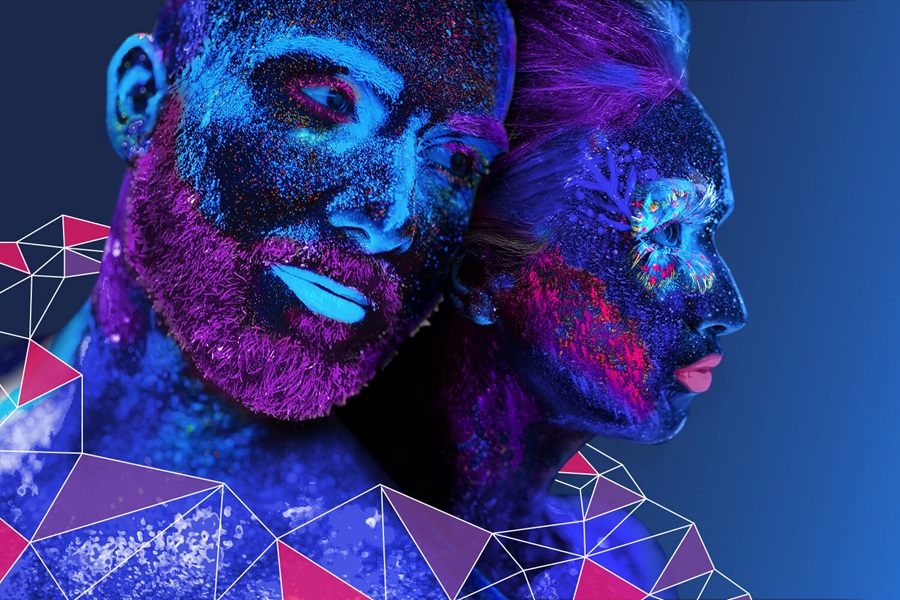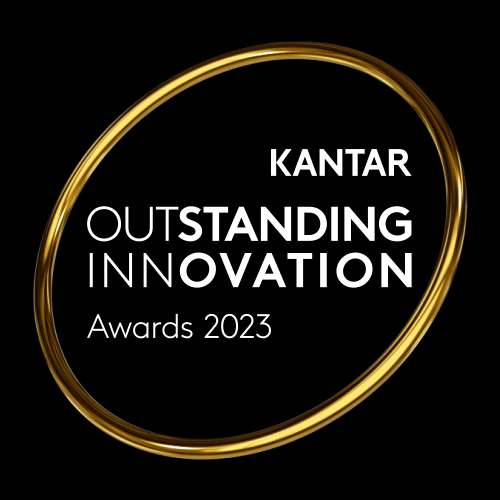Experience underpins brand success
A great brand experience is the foundation on which a meaningful and different brand is built.
Data from Kantar BrandZ finds that brands which are perceived to deliver a unique and meaningful experience are the ones that enjoy the strongest growth, and across 400,000 brand touchpoints measured using Kantar Connect Study, most of the impact on brand strength – 75% – originates from brand experience and word-of-mouth, three times that of paid marketing.
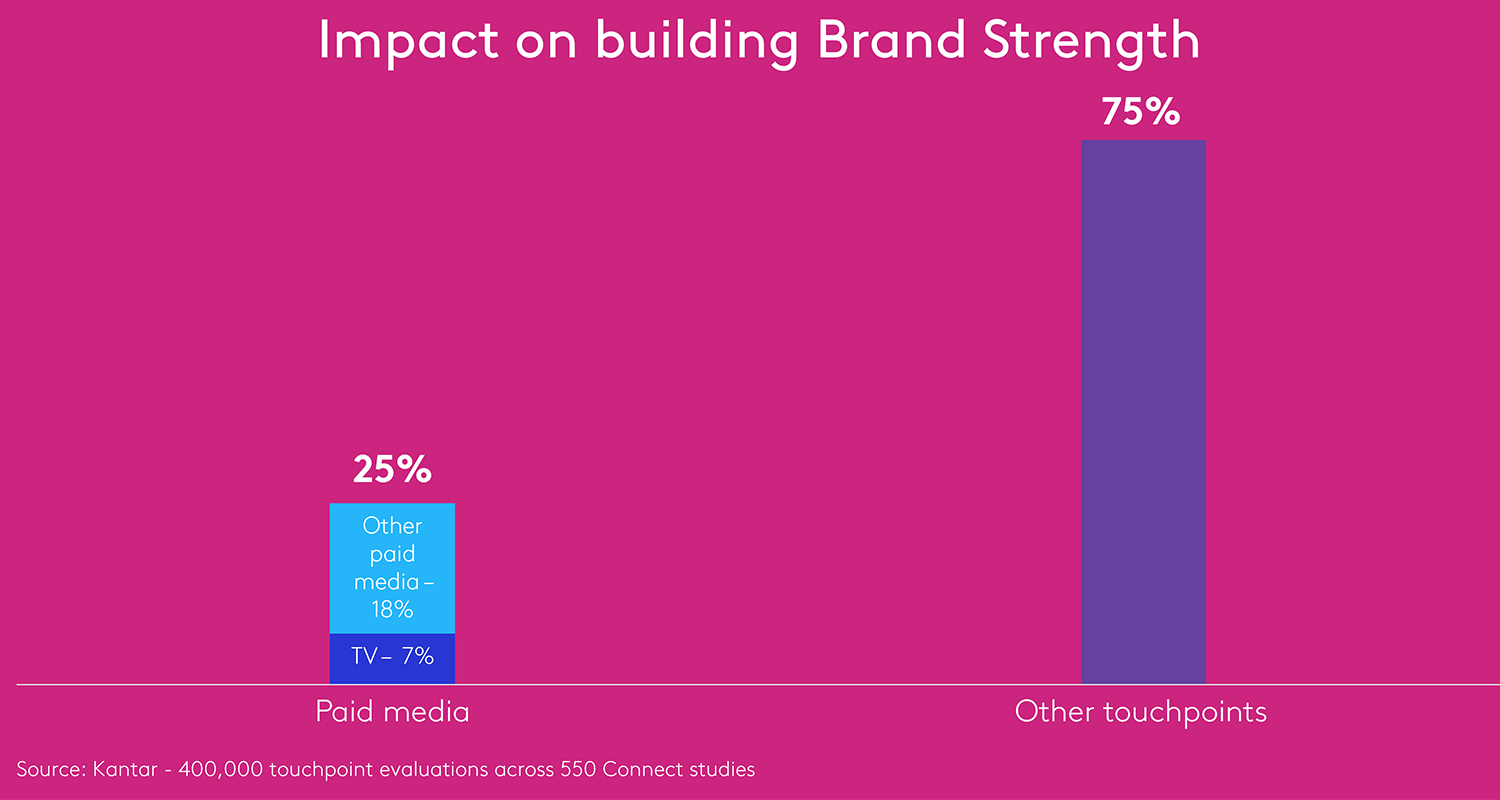
And as consumers continue to face unprecedented economic challenges their needs and emotions shift; therefore, consistent innovation across your entire experiences becomes increasingly important to continually stay relevant, meaningful, and different to customers.
Guinness’s launch of nitrosurge shows how effective this can be; they considered how to effectively replicate the unique to Guinness on-trade experience of ‘surge and settle’ at home, as in-home consumption became a more significant occasion during the pandemic. Guinness tops the tables in BrandZ for being meaningful, different, and salient compared to other UK beers, generating Demand Power over twice that of the average for the category and helping the brand account for one in every 9 pints sold in the UK.
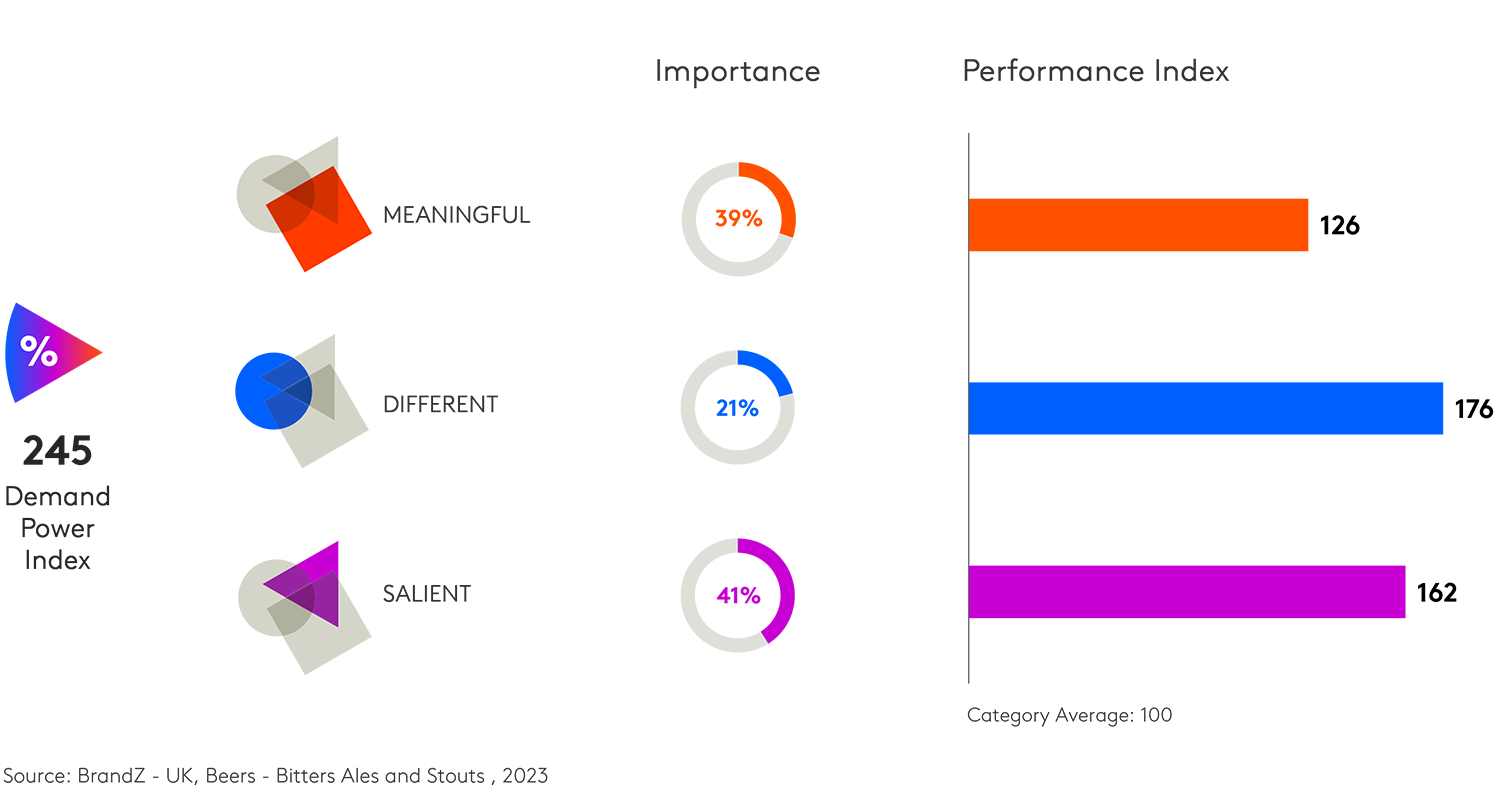
Frame and feed expectations
So, what makes a great brand experience? It is one where the experience is aligned with and builds on people’s expectations. Expectations (the brand promise) frame the experience of the brand and the experiences themselves then feed future expectations.
Pets at Home is a specialist pet care company based in the UK. Pets at Home’s brand promise is to deliver everything a pet owner needs to be able to look after their pet. By announcing that “We’re all for pets,” the brand sets a clear expectation. And Pets at Home deliver on that promise online and off. More than just selling pet food, bedding and toys, the company has expanded its offer to include nutrition advice, training, and veterinary care. Data captured through the VIP loyalty program, combined with mobile POS, allows in-store colleagues to deliver an increasingly personalized experience, spanning discounts to pet care services. The unique nature of the Pets at Home experience means that BrandZ finds the brand is well-differentiated, and the company’s annual report shows year-on-year revenues have grown by 6.6%, in large part driven by cross-selling enabled by the VIP program.
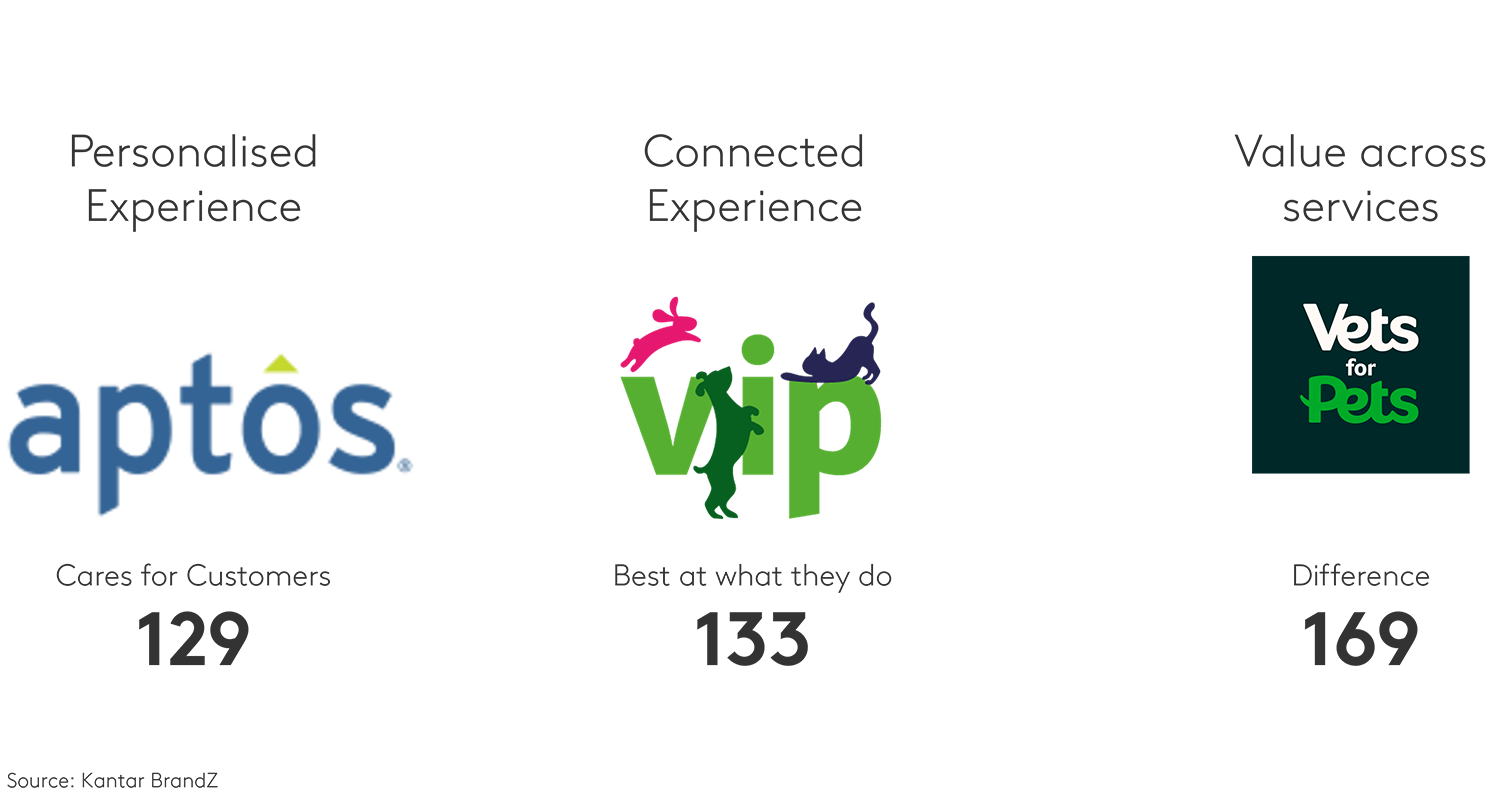
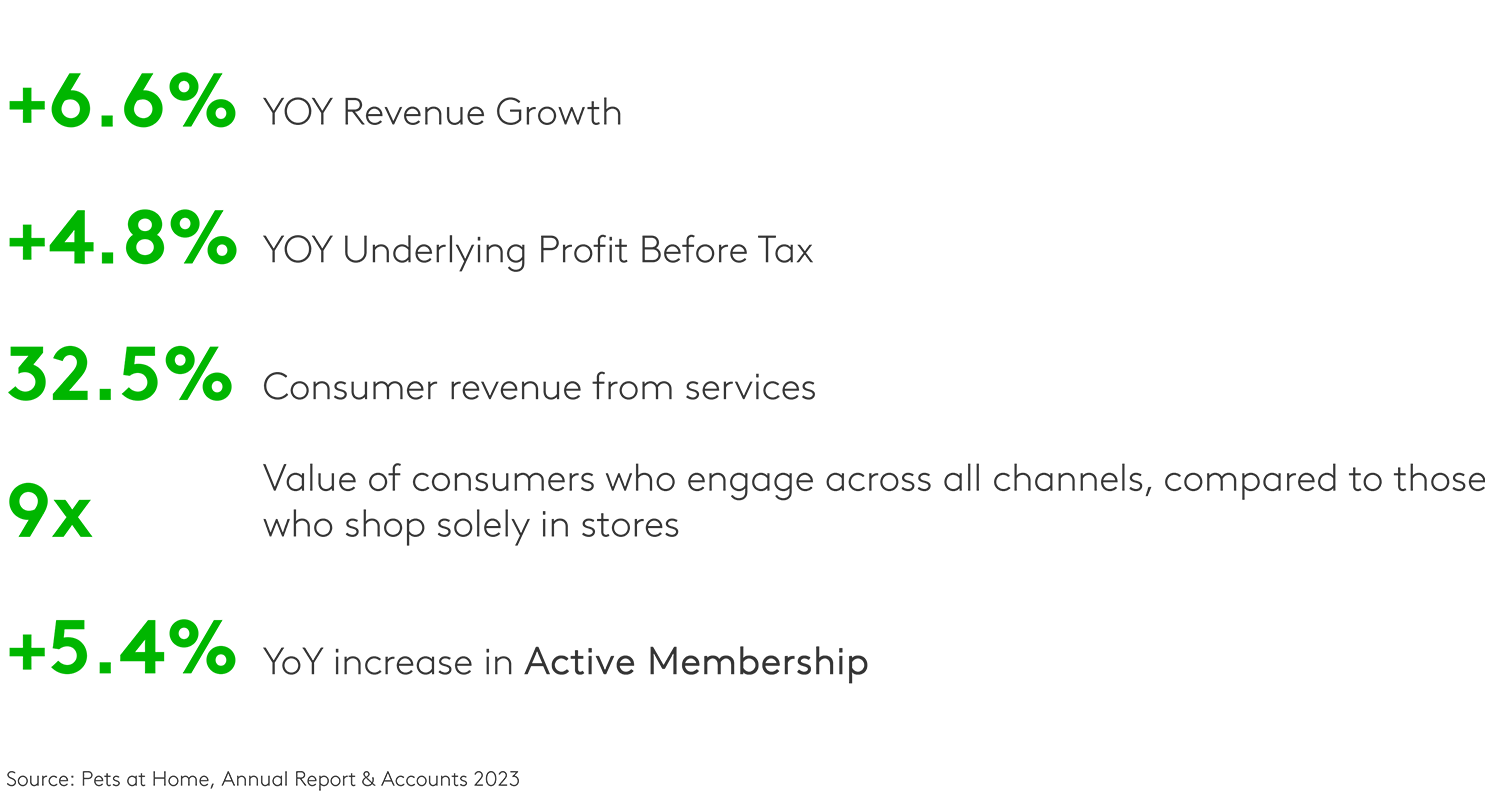
In its broadest sense, innovation is about creating new and better ways for people to experience a brand, but to do so effectively, the innovator must understand the interaction between expectations and memories, to create a coherent, consistent, and emotionally positive experience that encourages people to want to repeat that experience again and again.
Coherent and consistent innovation
McDonald’s understands the symbiosis between brand promise and experience and has effectively leveraged the power of experience to create a meaningfully different brand. Over the years, the brand has strategically addressed new needs and occasions, but done so in a way that is coherent with what the brand stands for, whether it is satisfying a new need with its McPlant Burger or opening up new routes to market with McDelivery. And over the past five years, McDonald’s stock price has risen by over 56% – so experience innovation does pay off if done well.
Many organizations will focus on creating frictionless experiences, meaning experiences that consistently meet needs as simply as possible across customer journeys. However, a frictionless journey will not be enough to drive long-term equity on its own. A frictionless experience may be so unremarkable that it may go unnoticed.
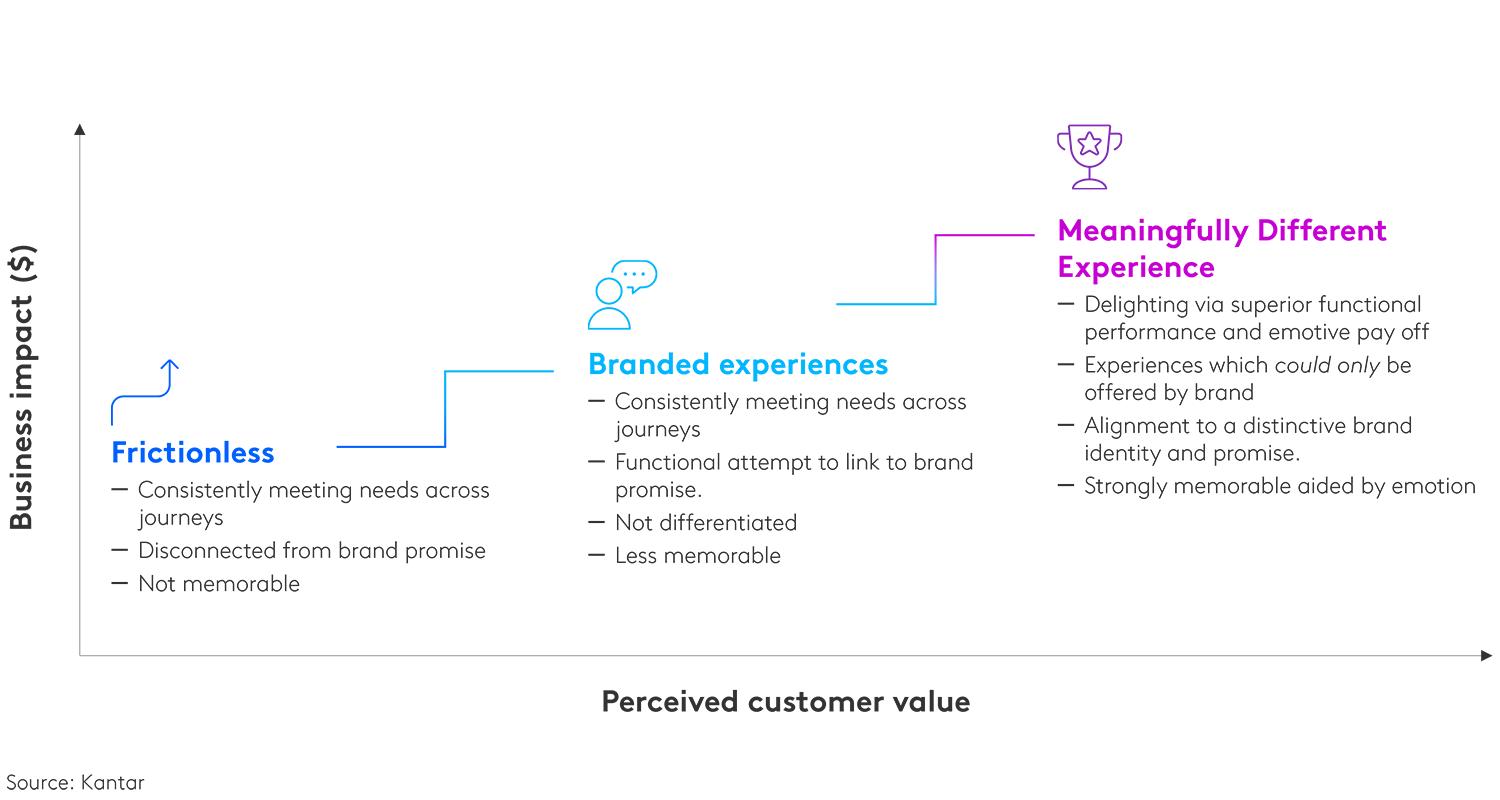
To deliver a meaningfully different brand experience, brands must deliver a differentiated and memorable experience, one which is aligned with the brand promise, and which evokes positive emotions to build brand affinity.
How innovation can help create a successful brand experience
So, the question becomes, why aren’t more businesses innovating to deliver a more meaningfully different experience? We identify three common barriers to that objective and offer solutions.
1. Empowering experience within a complex innovation process
Particularly in service industries, creating and delivering a great brand experience is a complex and challenging process, involving multiple departments, each with differing organizational objectives and processes. Unless the delivery of a unified and meaningfully different brand experience is made a priority for all, it is all too easy for that experience to be undermined by conflicting internal priorities.
Wider buy-in to the likely success of a project helps ensure that collective attention is focused on what matters most, that the innovation will delight the ultimate boss – the consumer. Tools like Kantar’s IdeaEValuate can be used to test both product and service innovations with your target audience quickly and cost-effectively, highlighting the importance of the brand experience and helping internal departments understand how their actions and protocols impact that experience.
2. Bringing together disconnected data
Just as with product or service delivery, experience measurement is often siloed and disjointed within a company, with different people running innovation and assessment. This is a problem because experience is individual and specific. An otherwise great brand experience could be marred by a dirty toilet, unfamiliar and confusing terminology, or packaging that fails to open easily. Requests, complaints, and customer commentary can all prove a valuable source of insight, but many businesses struggle to unify these varied inputs into a single perspective of the customer experience. A single-customer-view is an efficient way to get to rich and actionable insights, but in the absence of a unified view, agree with your colleagues which source points are most relevant for your consumer tracking; establish governance of how these sources will be shared and acted upon.
3. Overcoming the 'expert trap'
Fear of failure is an obvious concern, but perhaps more pernicious is the opposite: overconfidence due to the expert trap. As Sidney Finkelstein, professor at the Tuck School of Business at Dartmouth College, notes, expertise can mislead people in two important ways. It can stop you from being curious about new developments in your field, but it can also make you overconfident about your ability to solve problems. When it comes to innovation, it is all too easy for the innovator to believe they know best, even though the final judge of success is the customer.
One overarching quality helps ensure that the barriers are eliminated. That quality is curiosity. In their book, The Curiosity Muscle, Diana Kander and Andy Fromm, explore why it is hard for once leading companies to stay on top and conclude that curiosity is a core competence. They state,
“Without curiosity about what our customers want, we develop blind spots about our business. Blind spots are tension points that our competitors or some eager entrepreneur will only be too happy to exploit.”
They continue,
“Curiosity is the awareness of the gap that exists between what you currently know about your customers and what you need to know about them.”
As Kander and Fromm outline in their book, curiosity is like a muscle. It needs exercise if it is to become stronger, and the right tools and applications can help in that process. To help develop curiosity, look outside of your category for examples where businesses have successfully launched meaningfully different experiences. Your customers do not just buy from your brand and there can be huge advantages in understanding the origins of success in other categories. You can also use external expertise to help you identify new spaces for innovation, ones that will serve your customers better and ultimately drive better business outcomes.
In summary, what do brands need to do differently?
1. Elevate the importance of the brand experience when innovating.
Make your whole brand experience central to your innovation process, continuing to learn after launch and course correcting to deliver a meaningfully different experience.
2. Measure the experience.
We’ve talked above about different data sources, but all too often the more tangible products and services are forgotten when it comes to measuring the experience they deliver in-market. Make sure you follow up on how your innovation is performing. Brands such as Baileys review the holistic experience they deliver using innovation guidance systems that track their innovations closely in-market.
3. Learn, test, and learn.
Use the available data to pivot and course correct the experience to ensure you deliver a frictionless but meaningfully differentiated experience across every touch point on the consumer journey.
Whatever you do, do not launch your innovation and leave. Instead, launch and nurture your innovation to ensure it delivers a great brand experience and achieves its full potential.
